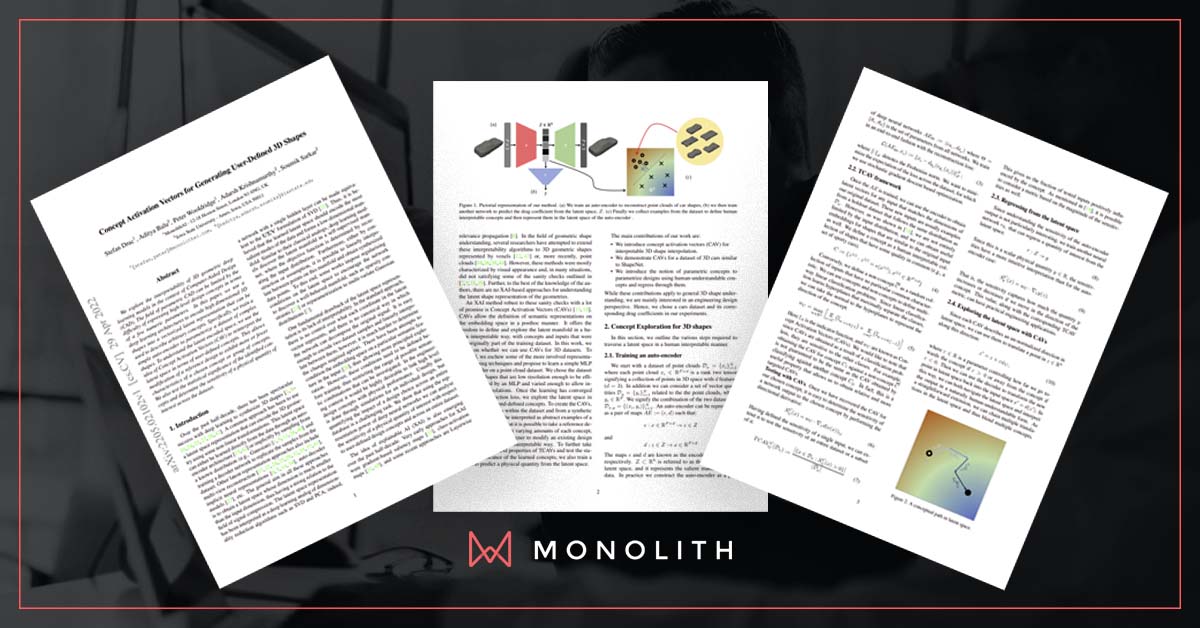Research paper
Concept activation vectors for generating user-defined 3D shapes

Abstract
We explore the interpretability of 3D geometric deep learning models in the context of computer-aided design (CAD). The field of parametric CAD can be limited by the difficulty of expressing high-level design concepts in terms of a few numeric parameters.
In this paper, we use deep learning architecture to encode high dimensional 3D shapes into a vectorised latent representation that can be used to describe arbitrary concepts. Specifically, we train a simple auto-encoder to parameterise a dataset of complex shapes.
To understand the latent encoded space, we use the idea of concept activation vectors (CAV) to reinterpret the latent space in terms of user-defined concepts. This allows modification of a reference design to exhibit more or fewer characteristics of a chosen concept or group of concepts.
We also test the statistical significance of the identified concepts and determine the sensitivity of a physical quantity of interest across the dataset.


